 It has been a busy summer and even though fall has arrived, things are not slowing down! We have picked a freezer full of vegetables and I have canned more tomatoes than I can count! Here are some photos of the garden to give you an idea of what we have been up to. Above is a lousy photo of one of our ginger lilies in bloom-they are so fragrant!
It has been a busy summer and even though fall has arrived, things are not slowing down! We have picked a freezer full of vegetables and I have canned more tomatoes than I can count! Here are some photos of the garden to give you an idea of what we have been up to. Above is a lousy photo of one of our ginger lilies in bloom-they are so fragrant!
 Back in May, I brought home 7 tire planters from the Urban Gardening Festival. This one is full of shade loving plants and they have really filled in, now I need to figure out how to keep it alive over the winter-these plants are not cold hardy!
Back in May, I brought home 7 tire planters from the Urban Gardening Festival. This one is full of shade loving plants and they have really filled in, now I need to figure out how to keep it alive over the winter-these plants are not cold hardy!
 The other 6 tires look like this and I just replanted them with fall flowers-now they need to fill in. The strawberries have spread like crazy and we are hoping for fruit by the bowl next year. The strawberries have also helped the rhubarb crowns get established and we were able to harvest from each plant.
The other 6 tires look like this and I just replanted them with fall flowers-now they need to fill in. The strawberries have spread like crazy and we are hoping for fruit by the bowl next year. The strawberries have also helped the rhubarb crowns get established and we were able to harvest from each plant.
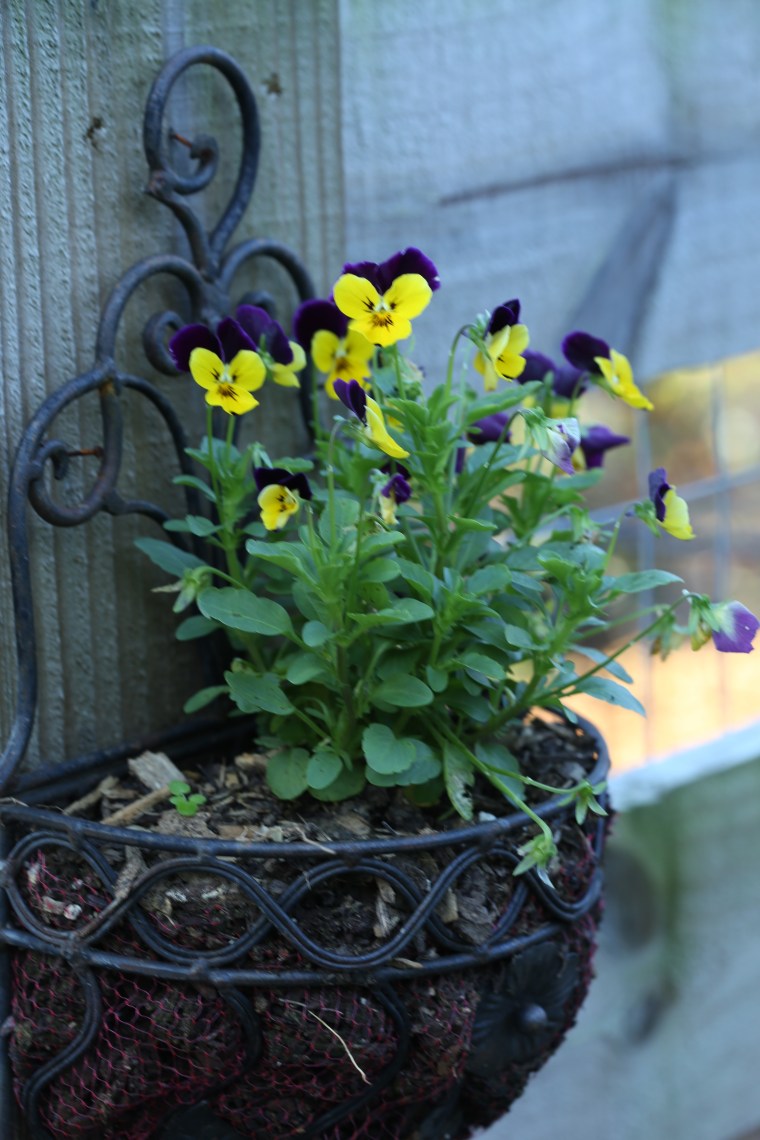 Gate greeters-love the little faces that greet me as I enter the garden.
Gate greeters-love the little faces that greet me as I enter the garden.
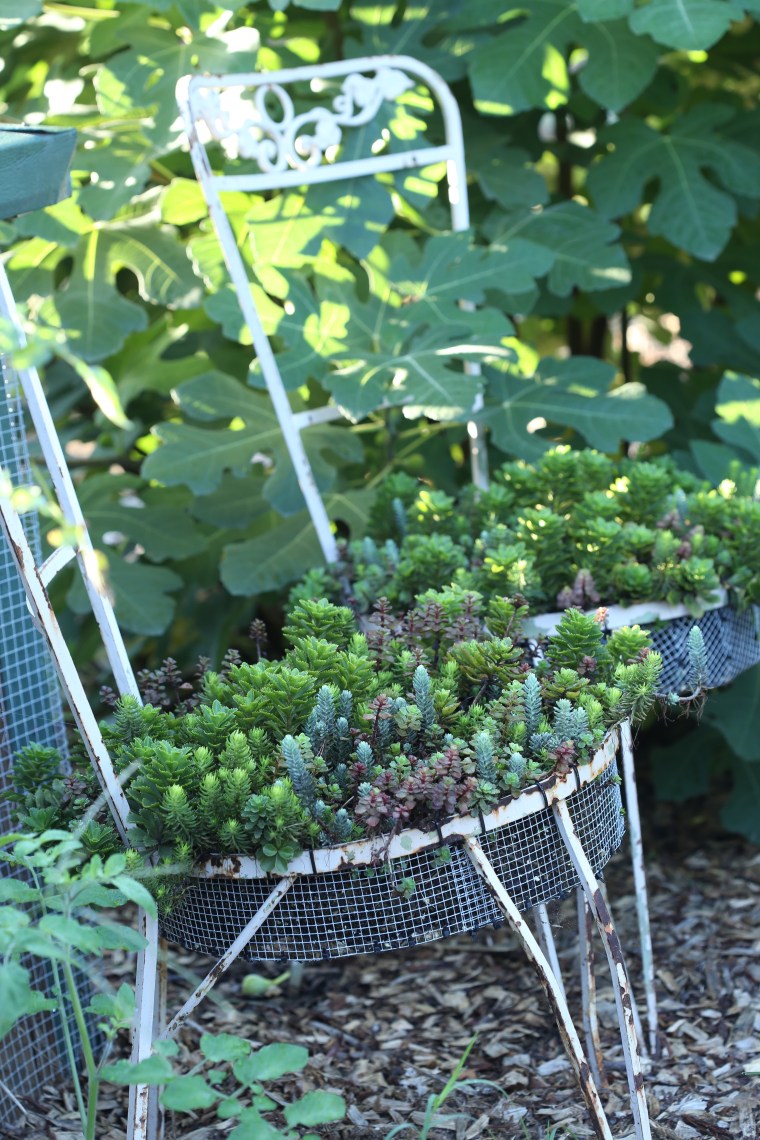 The chair planters I made this spring have filled in.
The chair planters I made this spring have filled in.
 How can you not love sedum? These plants are so hardy and can survive the neglect they sometimes get in this busy garden.
How can you not love sedum? These plants are so hardy and can survive the neglect they sometimes get in this busy garden.
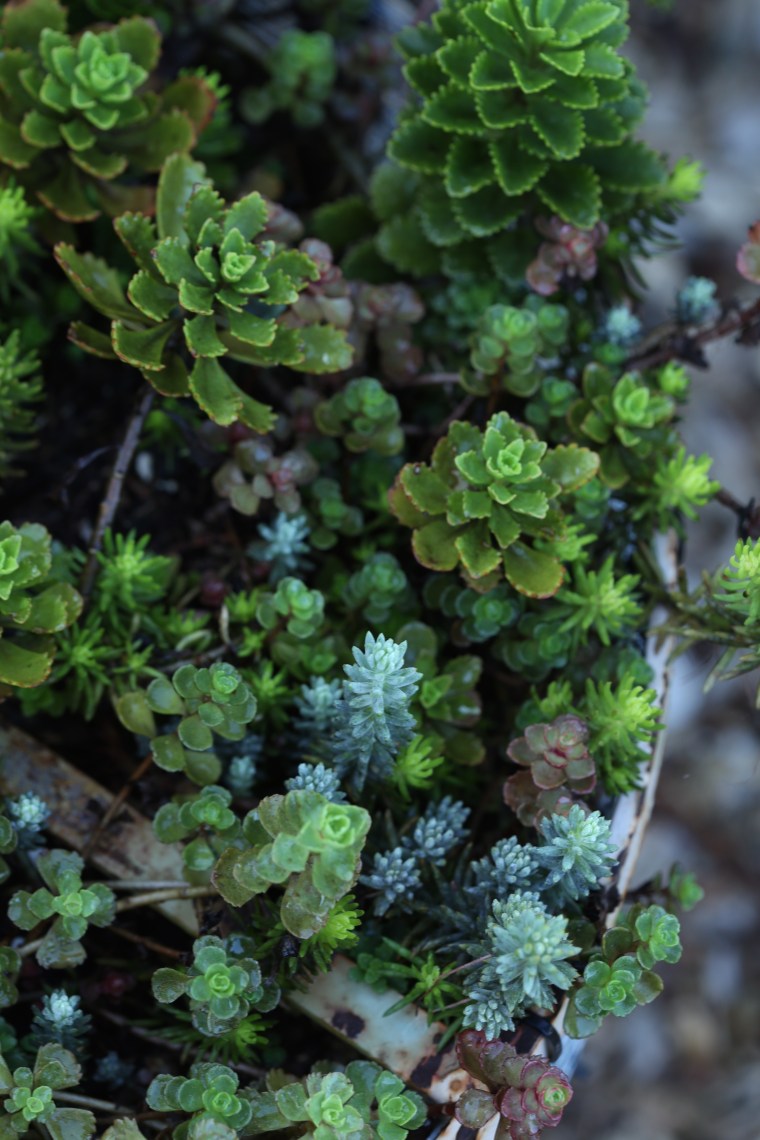 Love the colors and textures they add too and bees love the blossoms.
Love the colors and textures they add too and bees love the blossoms.
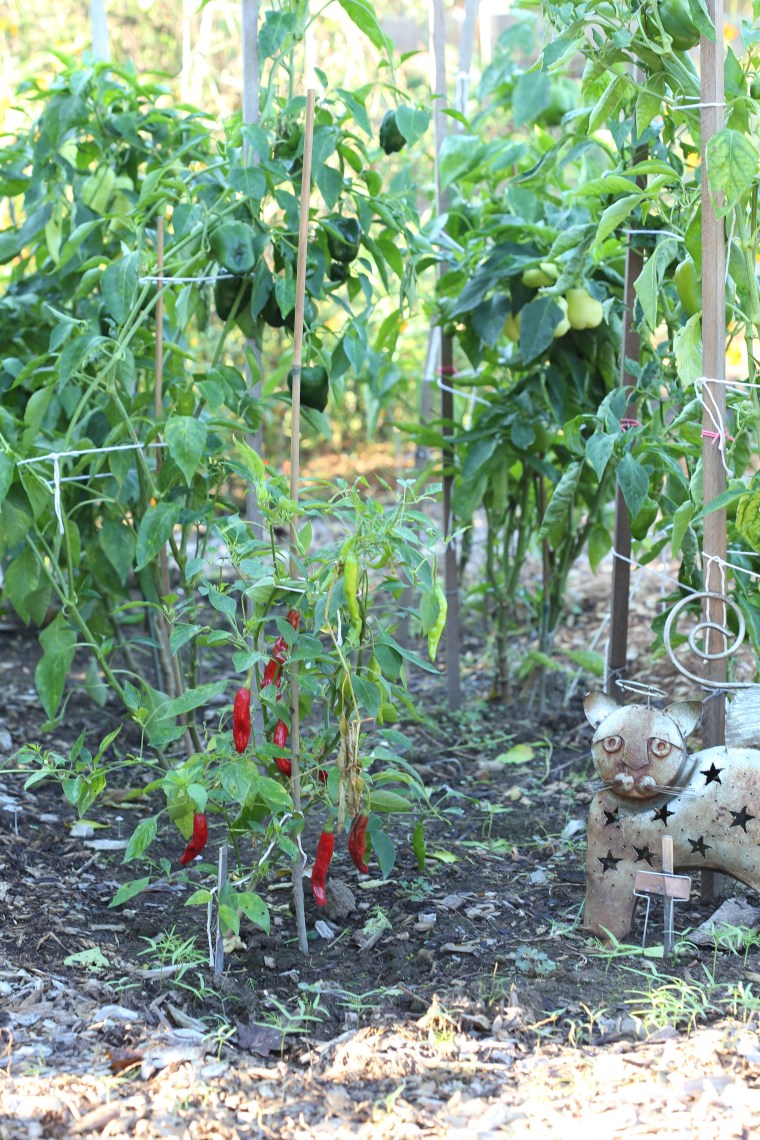 All of this heat has been just what the peppers needed and they are coming in by the bowl.
All of this heat has been just what the peppers needed and they are coming in by the bowl.
 Poblanos
Poblanos
 Sweet banana
Sweet banana
 Roselle Hibiscus is one of my favorite plants in the garden. This year I am experimenting with jam. The first batch is in jars but I see room for improvement and will be making more.
Roselle Hibiscus is one of my favorite plants in the garden. This year I am experimenting with jam. The first batch is in jars but I see room for improvement and will be making more.
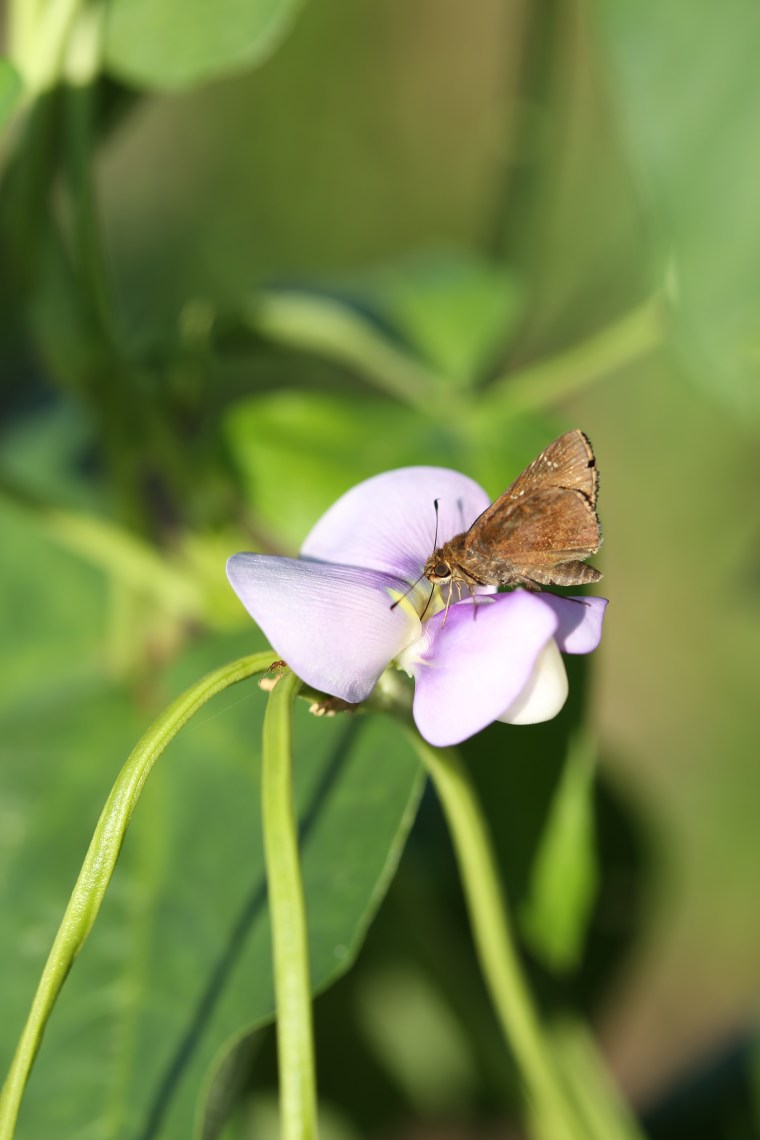 Someone asked me why I planted flowers in the garden. The short answer, I like them! But more importantly, so do pollinators and butterflies. This little skipper is drinking from a noodle bean flower.
Someone asked me why I planted flowers in the garden. The short answer, I like them! But more importantly, so do pollinators and butterflies. This little skipper is drinking from a noodle bean flower.
 New to us this year is Cardinal Basil. Those flower heads can get as big as a softball and the leaves are huge as well. The flavor is an intense, classic sweet basil flavor and it has made its way into a lot of tomato sauce this summer!
New to us this year is Cardinal Basil. Those flower heads can get as big as a softball and the leaves are huge as well. The flavor is an intense, classic sweet basil flavor and it has made its way into a lot of tomato sauce this summer!
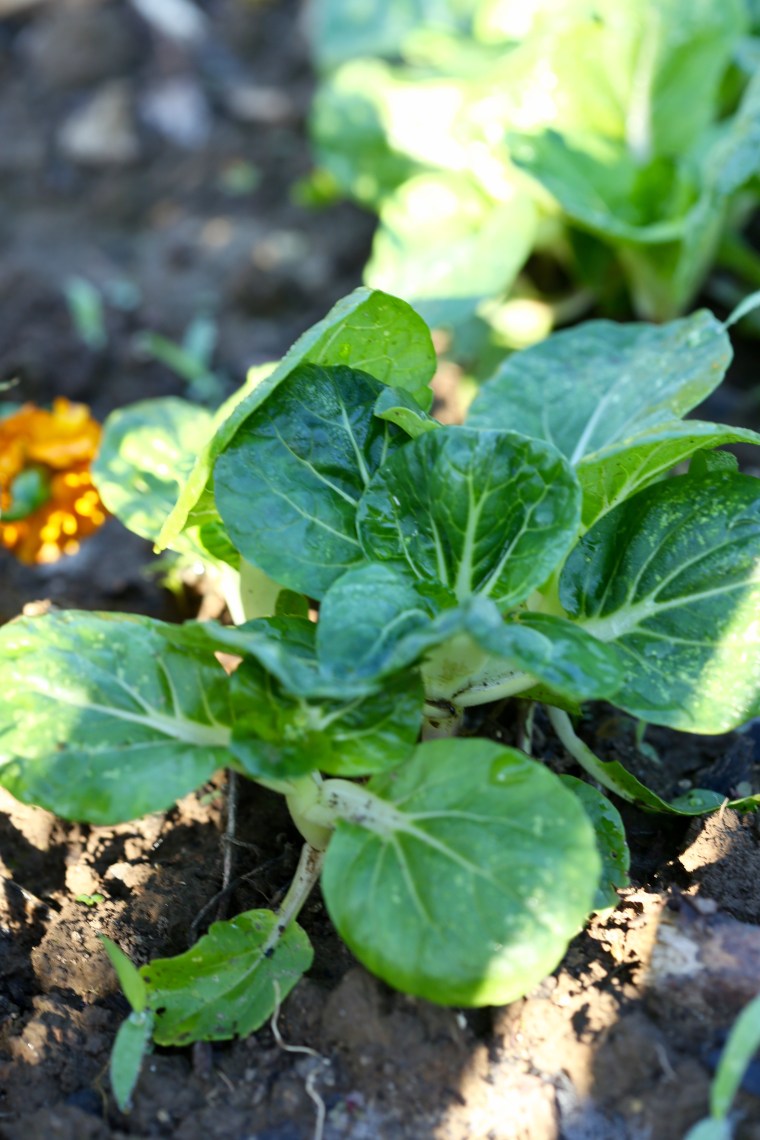 The change of seasons means a change of plants. Extra Dwarf Pak Choy is actually ready to harvest and we have picked some already.
The change of seasons means a change of plants. Extra Dwarf Pak Choy is actually ready to harvest and we have picked some already.
 The last of the canning tomatoes-finally done with it for the year!
The last of the canning tomatoes-finally done with it for the year!
 Where ever I go in the garden, they watch us work
Where ever I go in the garden, they watch us work
 Lady Bird, our only Americauna hen is a little shy in comparison to the others
Lady Bird, our only Americauna hen is a little shy in comparison to the others
 The watermelon jungle. First one we picked wasn’t ready and the chickens ended up with a nice treat. This one looks ready to go.
The watermelon jungle. First one we picked wasn’t ready and the chickens ended up with a nice treat. This one looks ready to go.
 Glass chicken.
Glass chicken.
 The bottle tree.
The bottle tree.
 The flower tower
The flower tower
 Cherokee Trail of Tears beans are one of the best heirloom beans. We let a bunch go to seed so we will have plants next year. We can also dry out the seeds and cook them like other dried beans.
Cherokee Trail of Tears beans are one of the best heirloom beans. We let a bunch go to seed so we will have plants next year. We can also dry out the seeds and cook them like other dried beans.
 Finding an egg in the box is something that never gets old.
Finding an egg in the box is something that never gets old.
 We harvested the sweet potatoes and pulled up about 40 pounds from the six plants in the bed. So, there you have it, what we have been up to the last couple of months. Come back and visit soon!
We harvested the sweet potatoes and pulled up about 40 pounds from the six plants in the bed. So, there you have it, what we have been up to the last couple of months. Come back and visit soon!
 This part of the garden does not get much direct sunlight and once the crape myrtle, which is not in the photo, leafs out completely, it gets little filtered light as well. Last spring I spent a week amending the soil and adding shade tolerant perennials to the bed. This year, nearly all of them came back except for a bleeding heart plant and they have truly filled the space.
This part of the garden does not get much direct sunlight and once the crape myrtle, which is not in the photo, leafs out completely, it gets little filtered light as well. Last spring I spent a week amending the soil and adding shade tolerant perennials to the bed. This year, nearly all of them came back except for a bleeding heart plant and they have truly filled the space. The iris actually gets enough light because it blooms before the crape myrtle creates shade. Also in bloom are azaleas, dianthus and phlox.
The iris actually gets enough light because it blooms before the crape myrtle creates shade. Also in bloom are azaleas, dianthus and phlox. Remind me to tell you the story of the gnome sometime… He is watching over the sunny part of the garden.
Remind me to tell you the story of the gnome sometime… He is watching over the sunny part of the garden. Love the little blossoms on the strawberry begonia.
Love the little blossoms on the strawberry begonia. While I have put a lot of work into the perennial beds near the front door of the house, none of that compares to the amount of work the vegetable garden has taken. We began in late fall of 2014 by composting the leaves that fell from our trees with grass clippings from the lawn and bags of coffee grounds from Starbucks. In spring of 2015, I topped each of the beds with that compost and placed 45 bales of straw on the beds in the garden. Throughout the year, I attempted to grow vegetables in the bales with out a ton of success. In early winter, when the bales began to tip like drunkards, I broke them down and scattered the straw on top of the compost along with more coffee, ground egg shells, compost (that includes litter from our hens) and a topping of purchased garden soil.
While I have put a lot of work into the perennial beds near the front door of the house, none of that compares to the amount of work the vegetable garden has taken. We began in late fall of 2014 by composting the leaves that fell from our trees with grass clippings from the lawn and bags of coffee grounds from Starbucks. In spring of 2015, I topped each of the beds with that compost and placed 45 bales of straw on the beds in the garden. Throughout the year, I attempted to grow vegetables in the bales with out a ton of success. In early winter, when the bales began to tip like drunkards, I broke them down and scattered the straw on top of the compost along with more coffee, ground egg shells, compost (that includes litter from our hens) and a topping of purchased garden soil.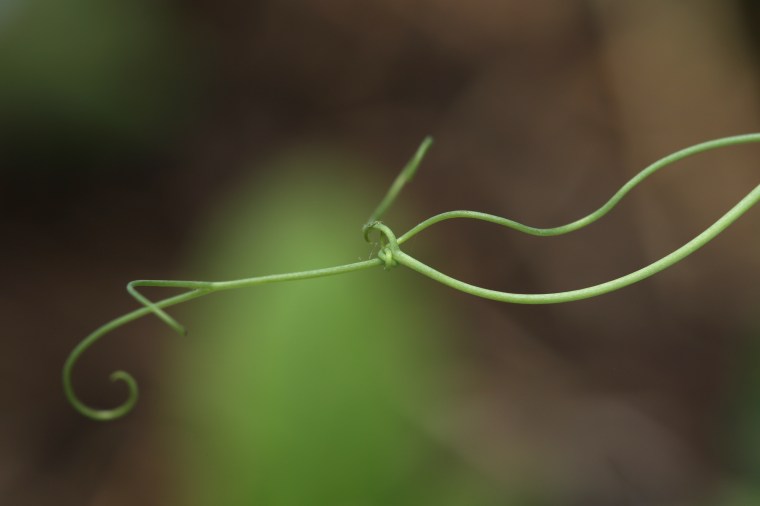 Peas were slow to get going but have finally come on board. Gotta love the tendrils and the way they tie themselves into knots.
Peas were slow to get going but have finally come on board. Gotta love the tendrils and the way they tie themselves into knots. Everybody loves surprise potatoes! Must have missed one when I harvested them last fall. not sure what it is but I am thinking it is most likely a yukon gold but the alternative is red norland; either way works for me!
Everybody loves surprise potatoes! Must have missed one when I harvested them last fall. not sure what it is but I am thinking it is most likely a yukon gold but the alternative is red norland; either way works for me! A lot of firsts this year. Ailsa Craig onions along with some radishes from an 8 year old package of seeds I found lurking in the box! We have lots of mushrooms coming up in the beds. Did you know that is a good thing? There is a relationship between plants and mushrooms and when some combinations are grown together, you can actually improve your yields-this pairing was random and not of my doing but my fingers are crossed that it helps. Want to know more about it, pick up a copy of
A lot of firsts this year. Ailsa Craig onions along with some radishes from an 8 year old package of seeds I found lurking in the box! We have lots of mushrooms coming up in the beds. Did you know that is a good thing? There is a relationship between plants and mushrooms and when some combinations are grown together, you can actually improve your yields-this pairing was random and not of my doing but my fingers are crossed that it helps. Want to know more about it, pick up a copy of  Chinese cabbage is doing so well-and I grew this from seeds!
Chinese cabbage is doing so well-and I grew this from seeds!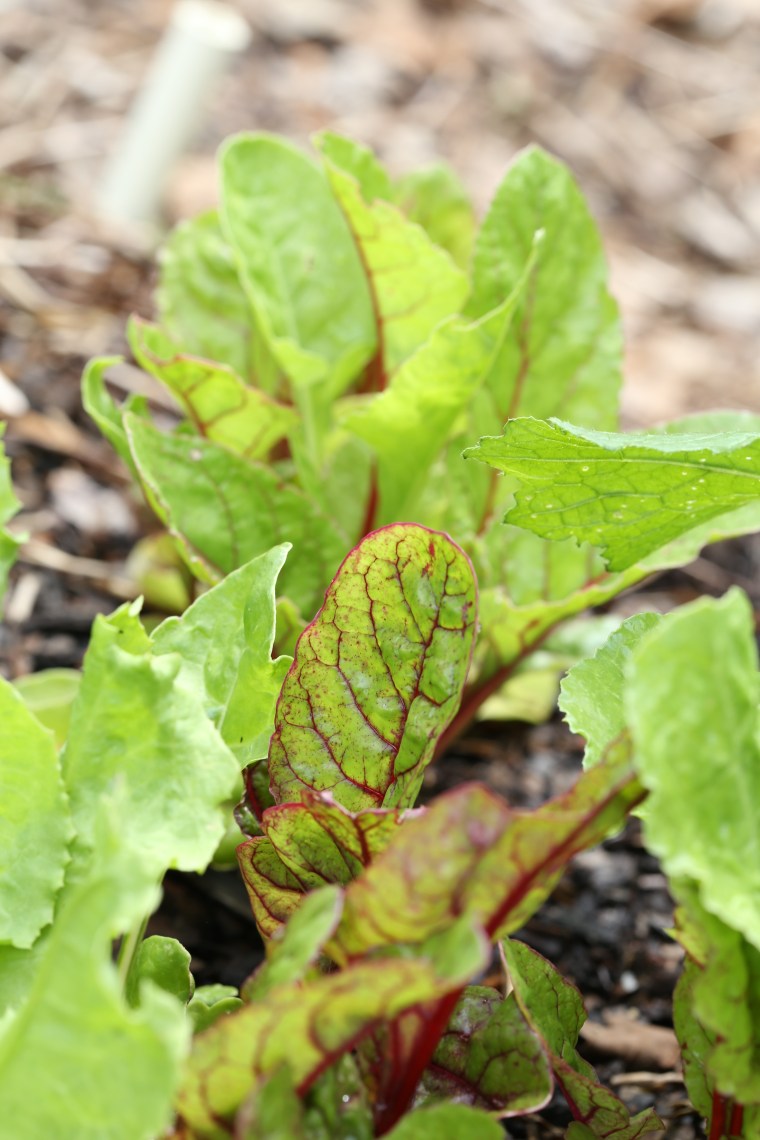 The way chard glows when backlit never gets old.
The way chard glows when backlit never gets old.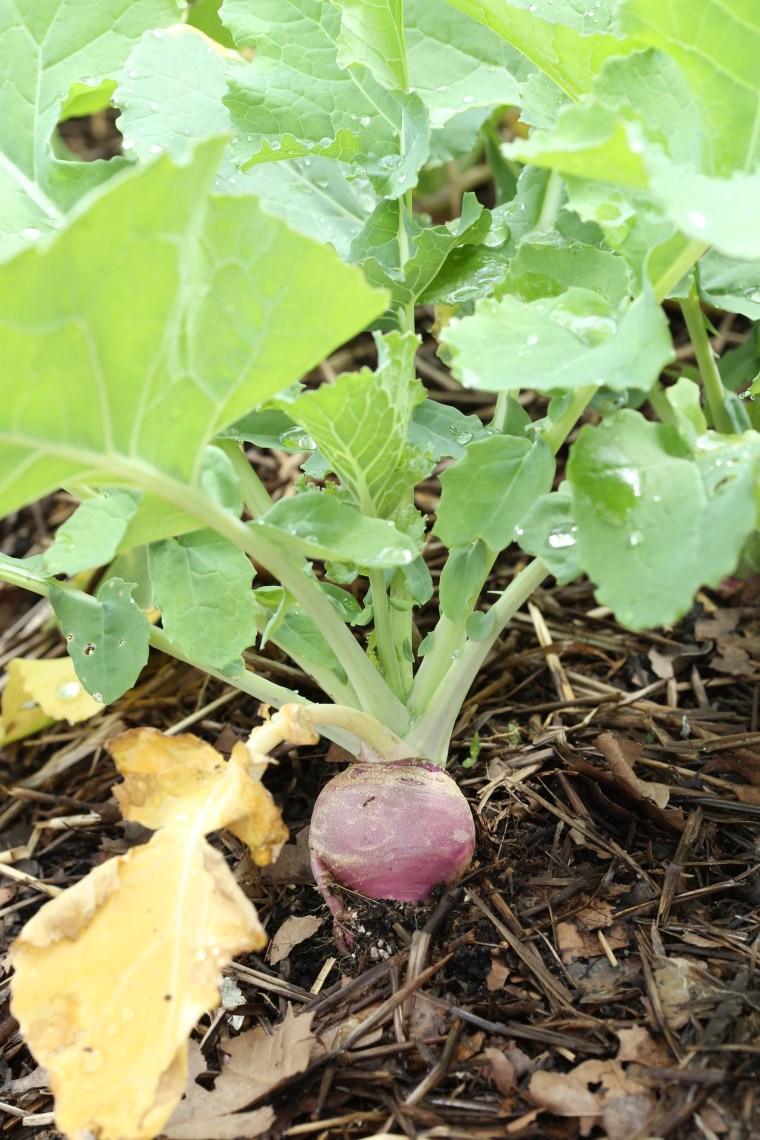 These rutabegas are taking off in the garden. If you grow them, be sure to eat the greens too! Cook them as you would collards and the plant will be doing double duty.
These rutabegas are taking off in the garden. If you grow them, be sure to eat the greens too! Cook them as you would collards and the plant will be doing double duty. Another of the firsts in our garden, salsify. Have no idea if we will enjoy it but I saw some plants in Colonial Williamsburg in the garden the the local master gardeners maintain and decided it was pretty and it needed to live in my garden too!
Another of the firsts in our garden, salsify. Have no idea if we will enjoy it but I saw some plants in Colonial Williamsburg in the garden the the local master gardeners maintain and decided it was pretty and it needed to live in my garden too! Speaking of pretty, these radicchio starts have been stealing the show for a while now. We pull a few leaves off from the bottom and are letting the heads fill out.
Speaking of pretty, these radicchio starts have been stealing the show for a while now. We pull a few leaves off from the bottom and are letting the heads fill out.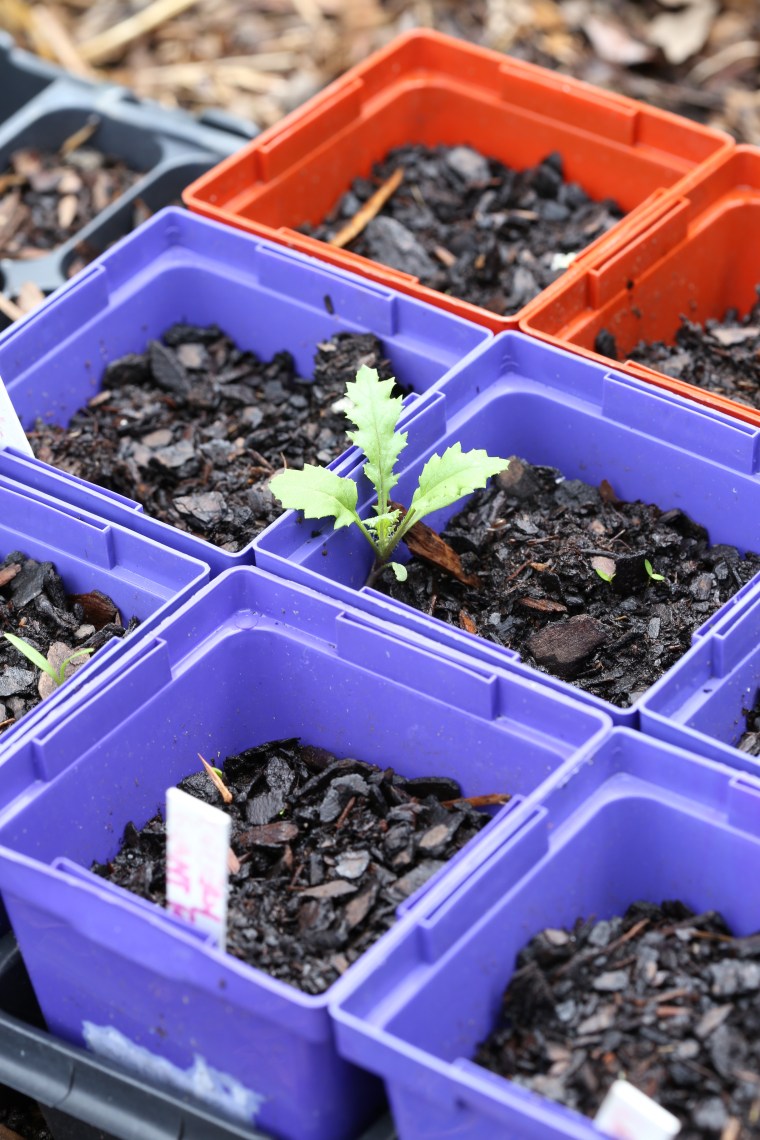 More starts, celery is taking its time.
More starts, celery is taking its time.

